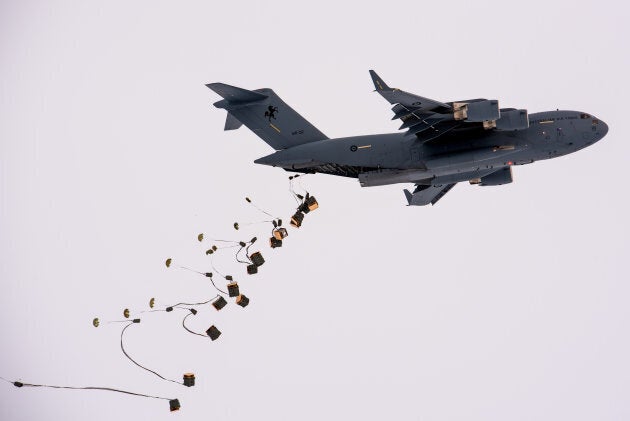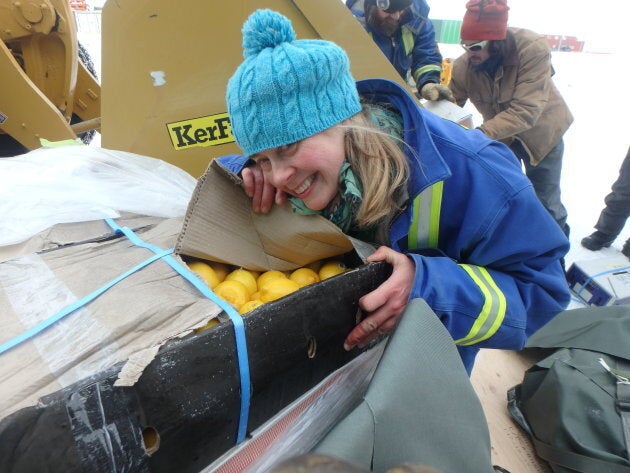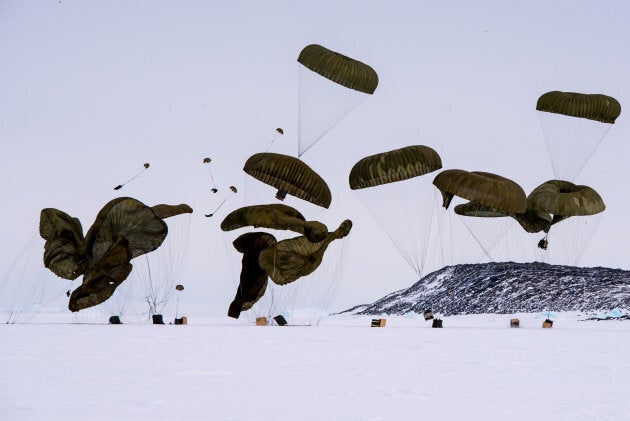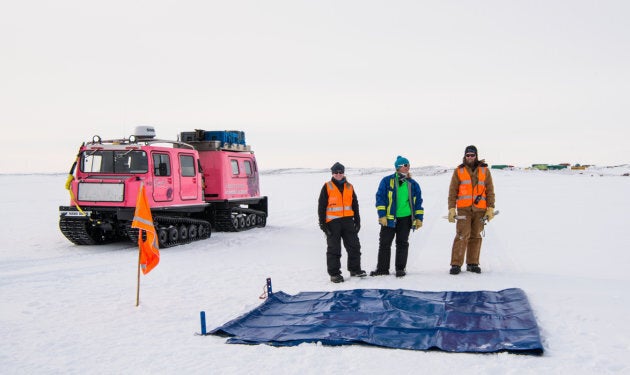In one of the most hostile environments on earth 17 Australian expeditioners spend half the year shivering through minus 40 degree temperatures and endless blizzards without any reinforcements from the outside world -- until now.
One of Australia's most far-flung Antarctic research stations has welcomed its first ever air drop of critical supplies, thanks to an Australian Air Force cargo plane which was re-fuelled mid-air.
The C-17A Globemaster completed a 10,000km round trip from Avalon airport in Victoria to the Davis Research Station in Antarctica, parachuting nine tonnes of supplies into the base -- all without ever touching down.

About halfway through its seven hour flight the C-17A was topped up by a fuel tanker aircraft while flying at 500km/h high above the Southern Ocean.
"Yesterday we dropped off cargo that contained food stuffs, mechanical supplies, some medical supplies and probably most important to the people on the ground, some mail," Future Concepts Manager at Australia's Antarctic Division, Matt Filipowski, said on Wednesday.
The Antarctic researchers -- who spend the winter monitoring flora and fauna, glaciers and sea ice and atmospheric signs -- had cleared a 1.5km squared drop zone on the sea ice to receive the precious cargo.
"For the station, the air drop means a greater connection to Australia, less remote, and the team feels very excited to be involved," Davis Station Leader Dr Kristen Le Mar said from the drop zone.

Davis Station has previously only been accessible via ships.
From May through to September, the Antarctic sea ice extends hundreds of kilometres from the station, making the route impassable.
"This is the first time we've been able to fly heavy cargo direct to Antarctica to far-flung stations, and also yesterday's capability has proven that we can do that outside the months of October and April," Filipowski explained.
The captain of the cargo plane, Flight Lieutenant Justin McFadden, said while mid-air refuels were not uncommon in the air force, it was the first time Australia had attempted it over the sub-Antarctic region.
"The aircraft simply fly in formation quite close to each other -- about 18 metres is the distance," McFadden said of the refuelling operation.

A fuel hose from the tanker plane is extended towards the cargo plane and positioned into place using a boom, with fuel then flowing through the hose at speeds of 5,000 pounds per minute.
"Our pilots are highly trained and quite proficient at this operation," McFadden said.
Australia has three Antarctic stations -- Casey, Davis and Mawson -- with Mawson being the most remote.
Filipowski said Tuesday's successful operation has now also put Mawson within reach.
"Mawson is conceivably the next step -- it's 5,500 kilometres from Hobart," he said.
The air drop has big implications for future research in Antarctica, potentially paving the way for more extensive exploration deep into the interior of the world's most isolated continent.
But for those on the ground, nothing could top the excitement of fresh lemons, carrots and potatoes, and messages from loved ones back home.
